Exhibits
John D. MacDonald
The tradition of the “hard-boiled detective novel” emerged out of the hypocrisy of Prohibition and the hopelessness of the Depression. A new urban crime fighter, surrounded by thugs and gangsters, served as a commentator on murder, greed, and all the seven deadly sins. Not always a professional detective, the protagonist of the “hard-boiled” represented the point of view of different social classes and myriad occupations. Drawing on this classic tradition, the works of “neo-noir” on display change the “hard-boiled” amateur crime fighter into a more subtle antihero who questions the very nature of good and evil. Although scholars have characterized the work of authors such as John D. MacDonald and Elmore Leonard as “thrillers”, the term “neo noir” is more appropriate, since their fiction clearly evokes the tradition of the earlier classic detective story of the 1930s. Mississippi provides the perfect backdrop for these “neo-noir” interpretations of murder.
The forces of good and evil do battle against the backdrop of the blood red Mississippi gulf coast in one of John D. MacDonald’s lesser-known works, Barrier Island. Although best known for his Florida detective series featuring Travis McGee, MacDonald delivers his winning combination of sleaze, greed, shady characters, and womanizing in Barrier. Two men, Tucker Loomis and Wade Rowley come to terms with self-indulgence, extortion, and murder in the fictional Mississippi town of West Bay.
MacDonald began hi pulp fiction, writing over forty novels before finding success with his character Travis McGee. Mystery novel historian William L. DeAndrea describes MacDonald’s typical themes as “business gone bad—crooked deals, misused power and the like.” Barrier Island is no exception to this formula.

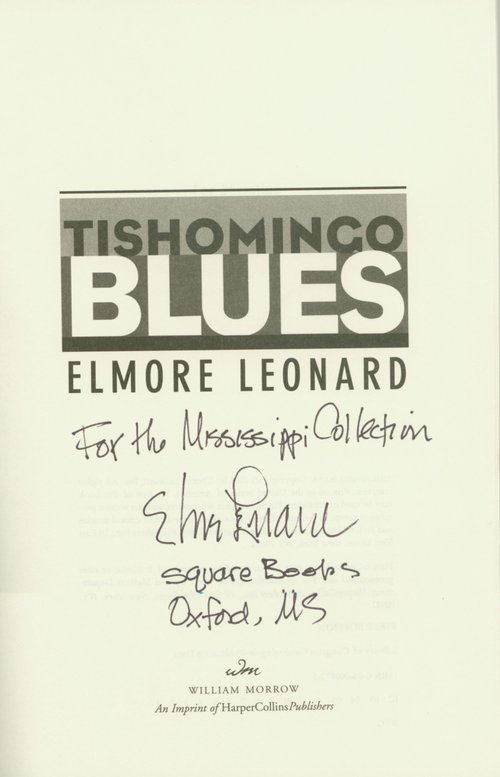
Elmore Leonard and “Tishomingo Blues”
Clifton K. Yearly described Elmore Leonard’s characters as “lower middle class or equally marginal denizens of the criminal world… They speak the American idiom and, in a world whose media convinces one of the omnipresence of perverts, delinquents, terrorists, and serial killers, and of the inherent and unpredictable brutality of the streets, they become credible.” This analysis of Leonard’s work captures the essence of Tishomingo Blues. The main character spies a mob hit from the perch of his high diving platform, an act he performs for a Tunica, Mississippi casino. His slide continues downhill as he meets up with the other witness to the murder, hustler Robert Taylor. A Civil War reenactment, adulterous affairs, mob thugs, and fast women occur within the seedy world of a casino-ruled Mississippi where artifice is normal and violence is an acceptable risk.
In 1926, “Peg Leg” Howell recorded “Tishomingo Blues” on Columbia Records. In 2002, Elmore Leonard used an excerpt from Howell’s vivid lyrics as the epigram of his book Tishomingo Blues. The exhibit features an original 78 from the holdings of the Blues Archive and the Living Blues collection.
From "Tishomingo Blues" / Peg Leg Howell (1926)
I’m going to Tishomingo to have my ham bone boiled
I’m going to Tishomingo to have my ham bone boiled
These Atlanta women done let my ham bone spoil
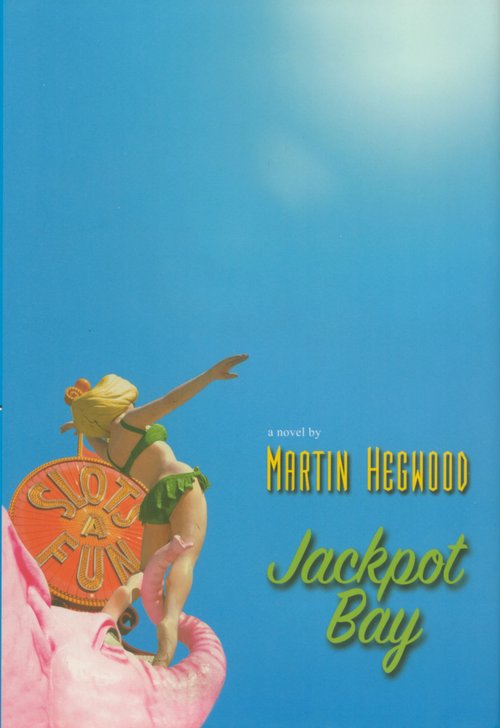
Martin Hegwood
In Jackpot Bay, Hegwood sets his popular Jack Delmas series on the Mississippi Gulf Coast, his childhood home. Biloxi and its environs have changed quite a bit since Hegwood shrimped off the Coast with his parents as a child. In the early 1990s, gambling money moved in as an onslaught of casinos dotted the Mississippi Gulf coastline. In Hegwood’s fiction, glitzy exteriors and seedy operators threaten the Gulf’s working class ethos. His main character, Jack Delmas is a man who would much rather sip a cool one off of Ship Island than work. Delmas usually becomes involved in dangerous situations thanks to the undue influence of beautiful, ruthless, and occasionally blindingly stupid women. Hegwood acknowledges the influence of authors such as John D. MacDonald and James Lee Burke and their gritty, realistic characterizations of men caught in uncontrollable situations.

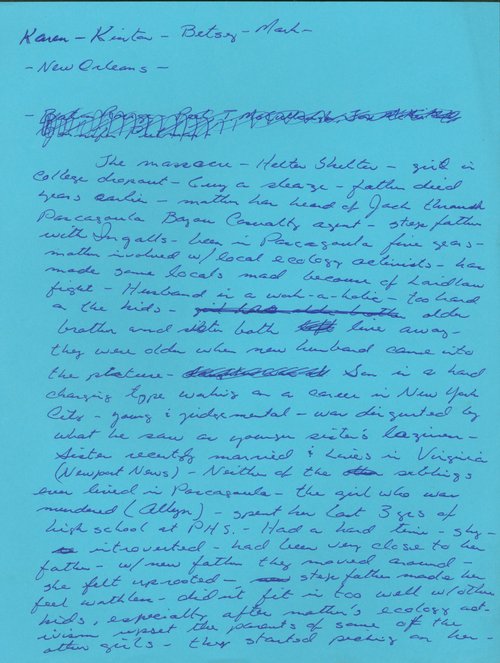
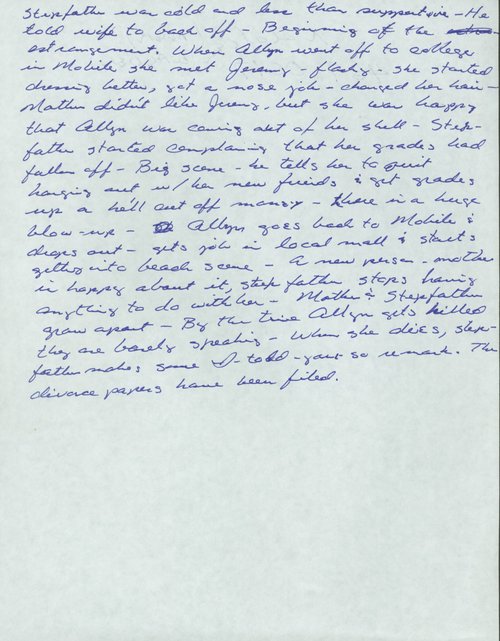
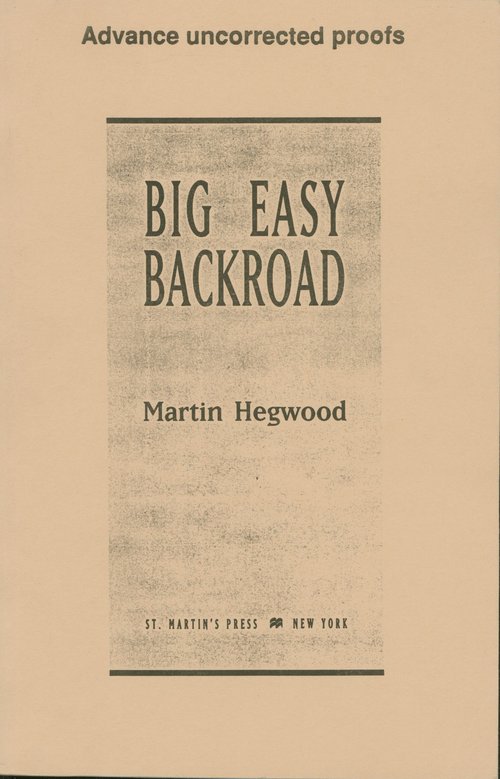

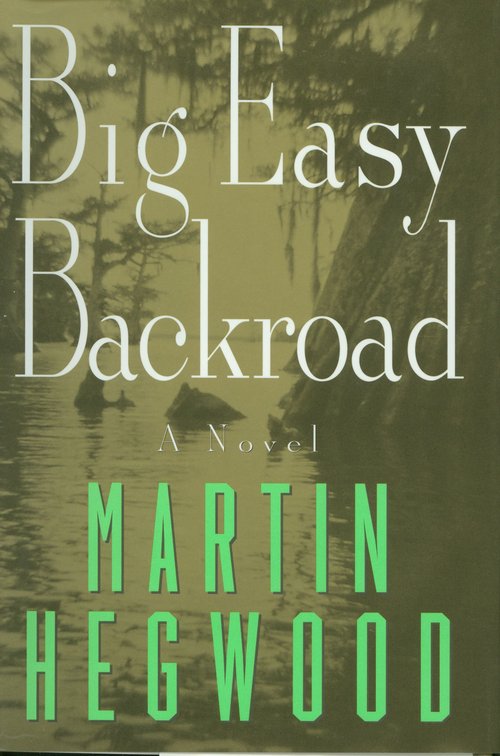
Of note, the annotated t, “ The Backroad to Big Easy” features a page from an early draft of Big-Easy Backroad in which Martin Hegwood experiments with the nom de plume, Wesley Sanders. The paste-up cover features heavy annotations to the layout and suggestions by the art director for changes. Notes regarding the color, layout, and other specifications fill all available space on the draft of the book jacket.
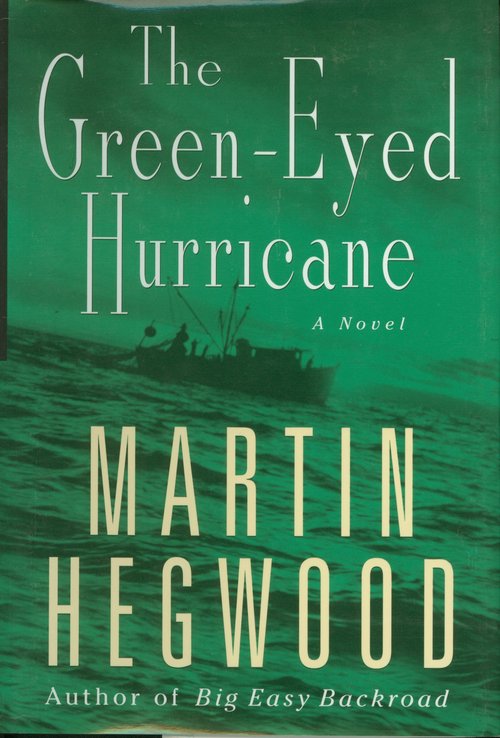
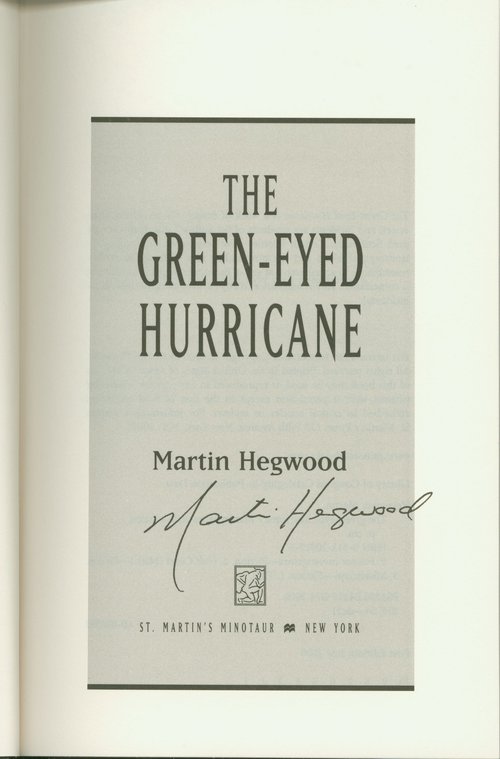

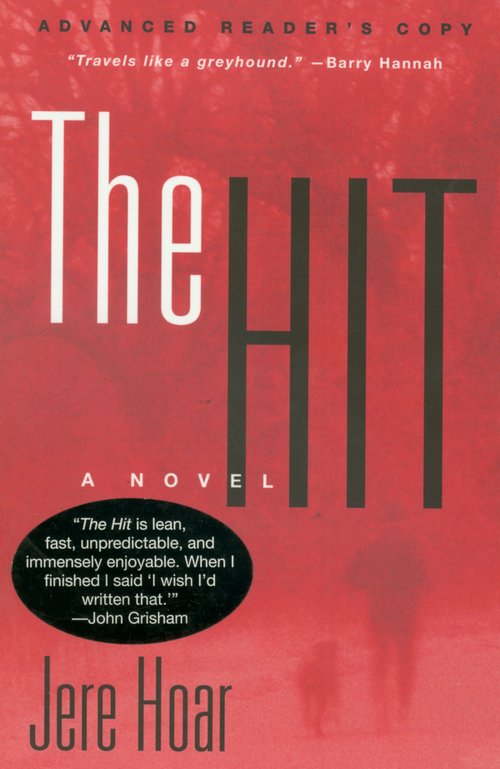
Jere Hoar
Patrick Anderson of The Washington Post described Jere Hoar’s 2003 novel The Hit as a “down-home Mississippi noir: a rich man, his sexy young wife, her Vietnam-veteran lover and his loyal dog.” A graduate and long-time faculty member of the University of Mississippi’s Department of Journalism, Hoar captures the essence of noir and skillfully sets it in a Mississippi locale. Although this is his first novel, Jere Hoar has actively published for quite some time, with several articles, scholarly monographs, and short stories to his credit. His 1997 short story anthology, Body Parts, received praise as a notable book of the year by the New York Times, Booklist, and Bookman News.
Critics agree that The Hit derives much of its literary punch from the resonance of a “lone, keen voice,” embodied in the protagonist Luke Carr who re-lives the memories of war, passion, murder, and betrayal from the confines of a mental ward.
Several items on display come from the author’s own possessions. Of special interest, the October 2002 email exchange between Hoar and his copy editor illustrates the author’s commitment to detail and precision. Hoar’s letter to Beau Friedlander, editor-in-chief of Context Books, succinctly captures the evolution of the moral breakdown of Luke Carr.
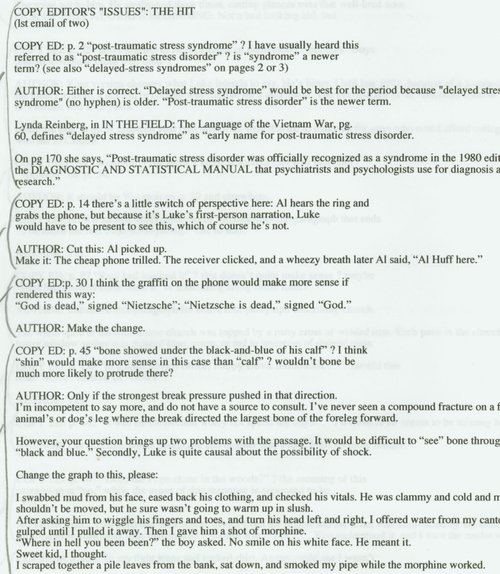
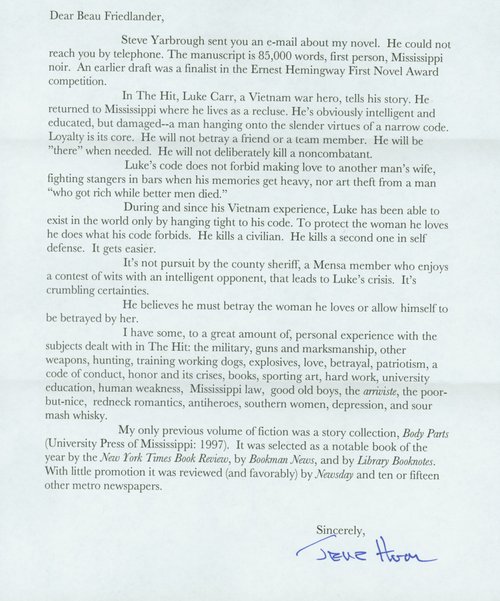
The inspiration for the novel’s faithful dog Adel was Hoar’s own pet, Brownie. The exhibit features a photograph of Brownie as well as the collar she wore.
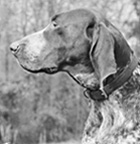
Martin Hegwood. Big Easy Backroad. New York: St. Martin's Press, 1999.
-- Big Easy Backroad. New York: St. Martin’s Press, 1999. Advanced uncorrected proof.
-- Annotated notes. Undated. Two pages of notes regarding the plot line for Massacre Island. (page 1; page 2)
-- Annotated manuscript. Undated. "The Back road to Big Easy."
-- Paste-up cover. [c.2000]. The Green-Eyed Hurricane.
-- The Green-Eyed Hurricane. New York: St. Martin’s Minotaur, 2000. Signed title page.
-- Jackpot Bay. New York: St. Martin’s Minotaur, 2002
-- Massacre Island. New York: St. Martin’s Minotaur, 2001
Jere Hoar. The Hit. New York: Context Books, 2002. Advanced Reader’s Copy.
Jere Hoar. The Hit. New York: Context Books, 2002. Advanced Reader’s Copy.
-- Typed document. 31 October, 2002. Selections from an email from Jere Hoar to Trevor, a copy editor at Context Books. Re: Author’s responses to questions posed by the copy editor regarding the manuscript of The Hit.
-- Letter from Jere Hoar to Beau Friedlander about The Hit.
Elmore Leonard. Tishomingo Blues. New York: William Morrow, 2002. Limited edition signed by author.
-- Tishomingo Blues. New York: William Morrow, 2002. Advance reader’s edition. Signed for the “Mississippi Collection” by author.
John D. MacDonald. Barrier Island: A Novel. New York: Alfred A. Knopf, 1986.
